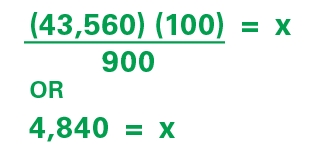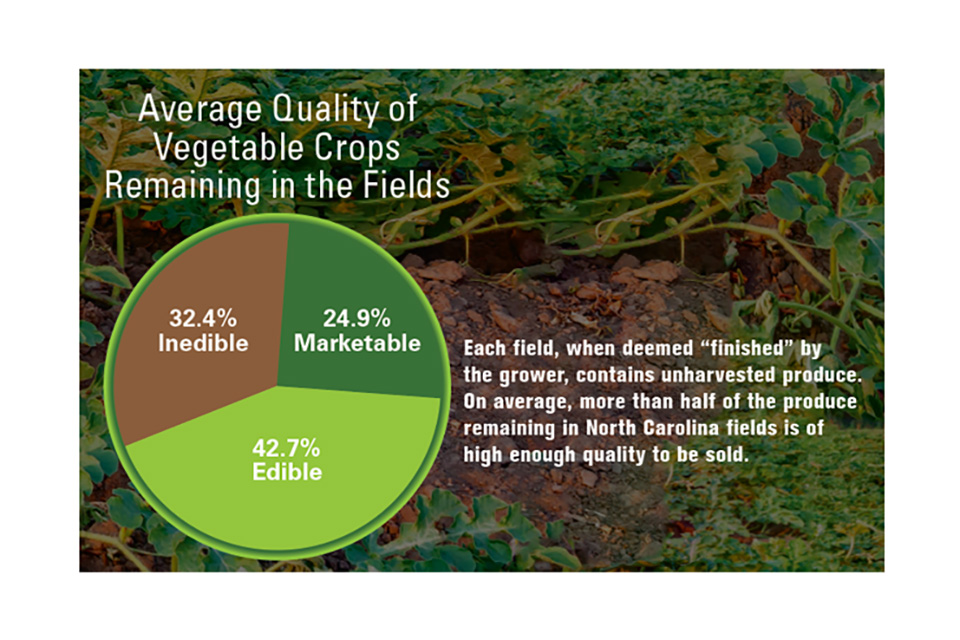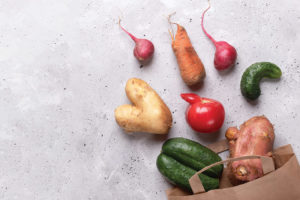Are You Leaving Money in the Farm Field?

Finding out what is left in the field is similar to measuring harvest potential. But you take the measurement when the crop is winding down rather than ramping up. Photo by Jeff Hyde.
A good maxim for any business is “measure-to-manage” (i.e., if you can measure it, you can manage it). And growers typically embrace it.
Yet there’s one area long overdue for measuring: how many fruits and vegetables remain in the field after the last harvest.
Why measure crops you’ve already decided aren’t worth harvesting?
We can give you one good reason. Our team learned several leftover crops on North Carolina farms were of high enough quality to sell profitably. On the flip side, we also learned some crops wouldn’t justify the cost of sending the harvest crews back in.
But the only way to know if another pass at your field really will be profitable is to know what you have. In other words, to measure.
In addition to potential sales, measurement can inform other strategies:
- Spacing plantings a few more days apart so that fields can be harvested again.
- Planting less acreage in order to reduce land and chemical use but still harvest the same amount.
- Training harvest labor to take more time in the field to ensure that less produce is missed.
- Contacting gleaning organizations to take advantage of the remainder.
Growers often diversify to reduce uncertainty. The strategy of measuring to manage produce still in the field may provide one more tool to mitigate risk as the season progresses.
Take a look at the step-by-step instructions we developed (in the box, right) to help you assess if it’s worth adding one more harvest at the end of the season.
How to Know What Is Left After Harvest
Finding out what is left in the field is simple and straightforward. It’s similar to measuring harvest potential, but the measurement is taken when the crop is winding down rather than ramping up.
- Identify rows at random throughout the field and mark desired lengths, such as 25 feet or 50 feet on each row.
- Harvest everything that remains on the plants.
- Sort the harvest for quality. Growers use a range of terms to refer to crops left in the field, such as surplus, ugly, culls, or seconds. For measurement purposes, it is helpful to categorize volume using categories that align with available markets. For example, we found these categories useful:
- Marketable: First- and second-tier product that could be sold on the wholesale market.
- Edible: Out-of-spec product that could be sold for processing.
- Inedible: Cannot be sold.
- Weigh and record the samples.
Calculate Available Produce in Your Field
The final step to understanding how much is left in your field is to use the following calculations.
Step 1
Determine how much of the field you sampled by multiplying the number of rows by the length of the rows and by the row spacing.
Here’s how that formula works on three 50-foot rows spaced 6-feet apart:

Step 2
Next you’ll total the weight of marketable produce found in the sample area. To do that, set up a ratio with x serving as the unknown amount of marketable produce per acre.
So, if you found 100 pounds in 900 square feet, and an acre contains 43,560 square feet, the calculation looks like this:

Step 3
Then it’s just a matter of doing the math. First, cross multiply:

The amount of marketable produce in one acre of this field is 4,840 pounds.
Step 4
Next, multiply by the number of acres to determine the harvest potential in this field.
For example, in a 15-acre field, the calculation looks like this:

Step 5
Finally, divide the number of pounds in a box to determine how many boxes are potentially available. Repeat this calculation to estimate how much produce of edible quality is in the field if a buyer is available.
For a detailed description of a sampling method and calculations for the unharvested crop,
see North Carolina State University Extension Bulletin AG-840, titled
“How to Determine the Potential to Increase Vegetable Yield through Estimating and Reducing Field Losses”
You’ve Measured. Now What?
Once the volume left unharvested is known, there are many ways to use the new knowledge.
The most obvious is to sell it to a known buyer. You could contact a buyer to say, “We have a truckload, or 10, and it’s of this quality. What’s it worth to you?” before making the commitment to harvest it.
Then, if the harvest crew is available, you can make an informed choice to harvest, knowing you will profit from the crop.
Although selling marketable produce will offer the best possible profit, you may want to consider alternative markets for your edible, but not marketable, vegetables.
Growers strive to produce the highest quality possible. Yet every grower has product they cannot sell. For these crops, consider connecting to alternative and emerging markets. It’s a great way to diversify the network of buyers and find homes for imperfect products.
How Much Was Actually Left After Harvest in Our Study?
When we measured unharvested crops in North Carolina, we found an average of 42% of sell-able crop (both marketable and edible) remained in the field.
What we found was much higher than what enterprise budgets, national data on losses, and growers themselves project. These groups typically project the percentage of unharvested to be 1% to 20%.
With our own results, we can only conclude there is no way to accurately estimate these figures without field measurements.
Although our measurements were higher than expected, we must assume they would be different in each crop, in every region or state, and every year. After all, our industry has a wide variety of farm management styles and crops.
The best way to understand the opportunity for further profit that is normal in your operation is to measure and understand what’s not being used. Measure it to manage it, and maybe to profit from it.
Here are two charts that illustrate our findings:


Apply Value to Your “Edible” Crop
Alternative markets like “ugly” produce programs, processors, box subscription programs, and food banks want blemished, misshapen, and/or surplus product.
But you likely aren’t familiar with those market prices. Here are a few rules of thumb worth knowing:
Processing or second-tier product often sells for half of the first-tier quality wholesale price.
And many food banks are now compensating growers at about 10 cents per pound.
To estimate potential profit on another run through the field, calculate the returns to each category and subtract the costs of harvest, sorting and packing, and transportation.
In some marketing scenarios, and in some crops, there will be an opportunity to profit. This was the case in North Carolina crops where growers left a high volume in the field. And they were high-value crops, or the crops had a looser specification for quality.
Yet in crops that mature very quickly, like summer squash, or crops that are left in the field at a lower rate, like cabbage, it’s likely that attempting to harvest one last time won’t be profitable.
Each crop is different and deserves its own assessment, so you don’t miss an opportunity.
Each field, when deemed “finished” by the grower, contains produce that was unharvested. We split this produce by quality between marketable, edible, and inedible produce. On average, more than half of the leftover produce is of high enough quality to be sold and utilized.
Whether produce is misshapen or blemished, considered “ugly,” or marketable quality but considered “surplus,” harvests later in the season are often returned to the soil rather than contributing to increased profit.
Although this decision is often made quickly because of the perishability of rapidly maturing crops, use of quick and easy measurement protocols can inform calculations of potential profit and lead to less loss and more profit.
What Us Ugly Food?
 Several distributors and retailers are tapping into an unusual consumer trend that may benefit vegetable growers. Sustainably minded people dislike the idea of discarding edible food for aesthetic reasons. They’re agitating for making blemished produce available.
Several distributors and retailers are tapping into an unusual consumer trend that may benefit vegetable growers. Sustainably minded people dislike the idea of discarding edible food for aesthetic reasons. They’re agitating for making blemished produce available.
A small and growing industry has popped up around this movement.
These distributors, food pantries, and retailers may use different language to describe it, however. Embracing a variety of terms for what may be considered “trash” on the farm is important. The buyers that are working to move products with a wider range of appearance quality may use terms like seconds, unmarketable, processing grade, ugly, blemished, misshapen, culls, or waste.
The companies are likely trying to tell a story with their product, and this is what their customers want. Many consumers are now
interested in a certain transparency in their products and want to help solve problems with their purchasing habits. As more of these
companies emerge, they will need fresh produce suppliers.









